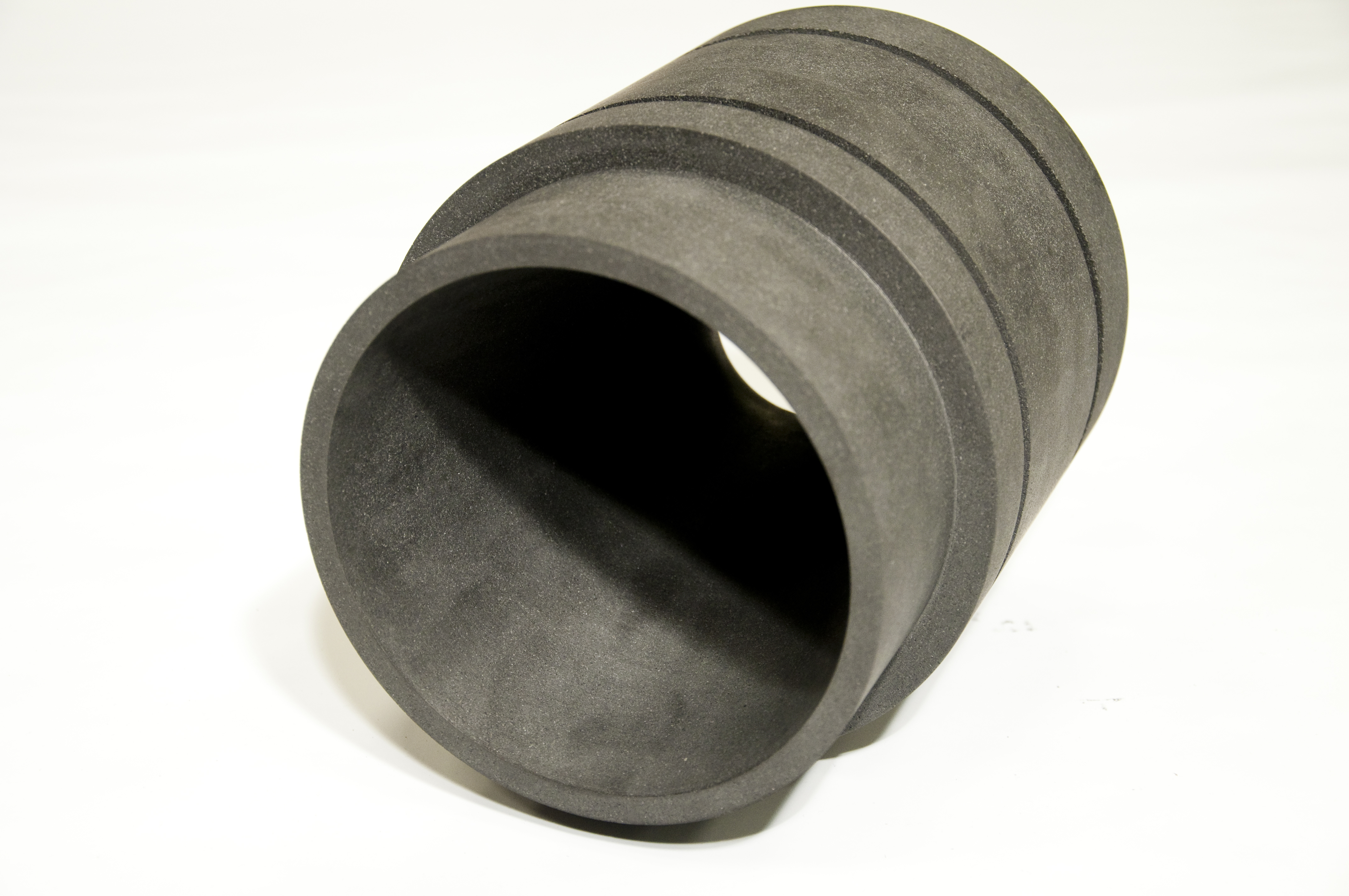
Thursday the Propulsion team produced the nozzle for Stratos II. The nozzle is the part of the rocket which expands the gas produced in the combustion chamber to supersonic speeds in order to generate the 10 kN of thrust needed to launch Stratos II half way into space.

One of the lathes that are available to TU Delft student projects with a semi-finished graphite nozzle in the chuck.
The nozzle is made from a solid piece of graphite and is able to resist the hot gas flow which can reach temperatures of 3000 K. After combustion, the gasses are accelerated in the conical convergent side of the nozzle until it reaches Mach 1 in the throat (the smallest cross section in the nozzle). After the throat, the gas is expanded and further accelerated in the divergent side of the nozzle.

Close-up of the finished convergent side of the nozzle.
Most student made nozzles, as well as most rockets used in DARE have a conical divergent side because of its relative simplicity in production. In a conical design, a significant part of the thrust is pointed off axis and hence is lost. For a demanding mission like Stratos, this loss of performance is not acceptable, hence abell shaped divergent side is used. In a bell shaped nozzle, the divergent side has a parabolic shape. This shape minimizes the off axis thrust component and hence gives an optimal performance.

Semi-finished nozzle ready to be machined on the divergent side.
The parabola is made by lathing linear steps of 1 mm in diameter, after which the stepped contour is sanded down to a smooth bell shape.

The steps that are used to give the divergent section its parabolic shape are clearly visible prior to sanding.
The hot gasses are accelerated in the divergent side to a velocity of 2000 m/s. Once produced the nozzle is outfitted with a retainer ring to fix in into the combustion chamber wall and two o-rings to provide a sealing barrier against the hot gas flow. In only 41 days, this nozzle will thrust Stratos upwards on its journey half way into space.

